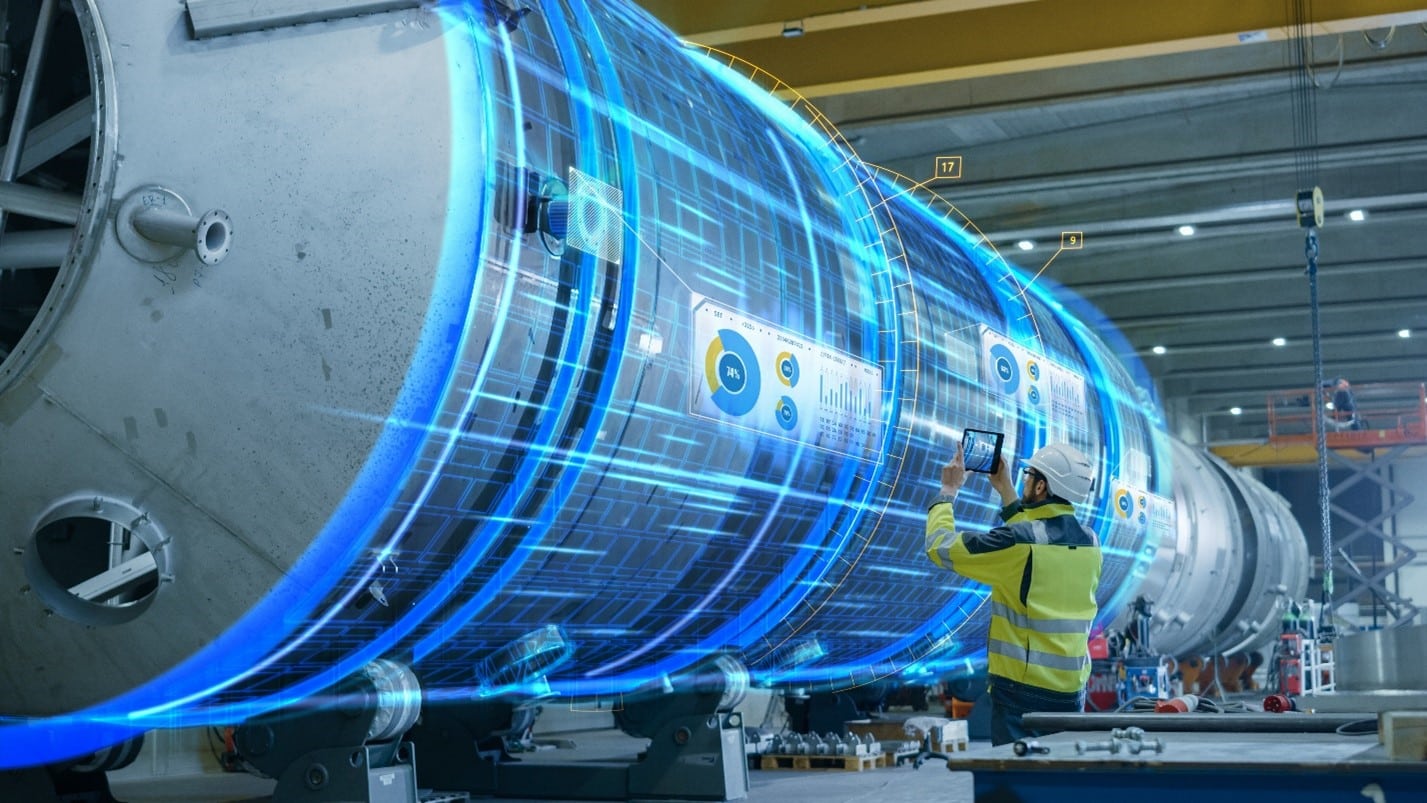Manufacturing virtualization is a powerful computing concept with vast potential to aid manufacturers in achieving many of their most important operational goals: increased efficiency, faster production, more informed decision-making and lower costs.
What is process virtualization?
Process virtualization refers to running many different types of software packages on one piece of hardware. Far beyond one piece of equipment running different applications, virtualization involves the use of “virtual machines,” which may have their own operating systems, libraries, data sources and more.
Running on top of a piece of software known as a hypervisor — which creates and manages virtual machines — each virtual machine draws on the centralized processing power and servers of the primary hardware, while fulfilling a broad range of computing functions throughout the manufacturing facility. Throughout this piece, we will look at how the benefits of a manufacturing virtualization plan, the types of data virtualization and how virtualization relates to manufacturing.
How is virtualization used in manufacturing?
Virtualization has a broad range of applications in manufacturing. These include:
- Edge computing: Virtual machines enable powerful computing processes to occur at the location of data collection — known as edge computing. With virtualization, devices located at the “edge” — at the machine — can use the full processing power of the main centralized server hardware without the need for costly and large equipment to be installed throughout the facility.
- IT operations: Virtualization allows for more streamlined and integrated IT operations, enabling IT personnel to manage many fewer pieces of hardware while still retaining just as much, if not more, processing power and versatility throughout the facility.
- Resource management: With virtualization, facilities can easily manage the hugely disparate array of resources — from people to equipment to materials — without the need for numerous separate servers, terminals and software.
- Inventory and supply chain management: Virtualization enables easy communication between inventory management monitors and other software, allowing for increased efficiency in this traditionally inefficient area.

Types of virtualizations
There are many different types of virtualization that can be implemented in a manufacturing facility. These include:
Data Virtualization: Data virtualization integrates data collection, monitoring, processing and visualization systems, making it easier than ever to deliver usable, actionable data for decision-making throughout the facility — at the micro and the macro level. Data virtualization can assist in real-time maintenance decision-making as easily as it can help managers and executives forecast for the future.
Server Virtualization: Server virtualization creates several different servers on one piece of hardware. With server virtualization, the virtual machines can run distinct operation systems, applications, backups and more. This type of virtualization enables each virtual server to harness the full processing power of the main server, without the need for costly separate hardware installations that will use power less efficiently. In addition, server virtualization allows for shared libraries, scripts and data usage when convenient, reducing the amount of redundant data and increasing processing efficiency.
Storage Virtualization: With storage virtualization, the storage space of multiple computers or storage devices is grouped together into a centralized “virtual drive,” which acts as a single device for the end user to access data. Storage virtualization allows for better use of available storage space, increasing speed and cost efficiency.
Network Virtualization: This application takes the available network and communications bandwidth of a facility and assigns it to discrete, separate servers and devices to provide advantages in traffic management and efficiency.
Desktop Virtualization: Desktop virtualization manifests in several different ways. For larger organizations, desktop virtualization enables the centralized management of individual devices (such as laptops and tablets) throughout the organization, allowing for “push” delivery of security updates, software updates and installation and so on. Desktop virtualization can also mean virtual machine creation on individual devices, for example, a virtual Windows or Linux device on a Mac computer to run software specific to those platforms. This type of virtualization saves on hardware and software purchasing.
Application Virtualization: Application virtualization refers to self-contained applications that run as “mini virtual machines.” These applications are not installed on devices in the traditional sense, but rather leverage the host operating system to operate in a lightweight, easy-to-modify manner. Application virtualization reduces the amount of processing power necessary to run these often-powerful programs, which can lead to material energy savings and time efficiency.
Benefits of virtualization in manufacturing
Does virtualization increase performance? As evidenced by the above applications, the answer is yes – along with many other benefits. These include:
- Increased process efficiency: With virtualization, computing processes occur in a more efficient manner since virtualization is often used to divide and dedicate processing power and bandwidth in the most effective way possible. This benefit can lead to faster production time, more effective decision-making and reduced costs.
- More efficient maintenance: Virtualized processes running at the point of data collection give equipment operators and maintenance technicians access to performance information more quickly and efficiently than ever, providing the benefits of increased control over data usage and decision-making. Data virtualization can provide operators and technicians with increased agency to make informed, effective decisions that can reduce downtime, improve productivity and save money.
- Keep hardware out of harm’s way: Production environments often present harsh conditions: extreme heat (or cold), reduced airflow and difficult-to-reach locations. It is often impractical or impossible to install extensive hardware in these locations. Virtualization overcomes these challenges by allowing for the installation of smaller devices that can leverage the power of the centralized server hardware, rather than requiring a full integrated installation. This benefit also protects hardware from damage in case of equipment malfunction, reducing time and costs for repair and replacement.
At ATS, we specialize in the latest in maintenance technology, focusing on the equipment health metrics that deliver increased productivity and lower overall costs for your facility. We feature decades of expertise along with a deep knowledge of the latest in IIoT technology, and are ready to leverage technology to improve your maintenance efficiency. From condition monitoring to a comprehensive maintenance and support, we offer the expertise you need to keep a competitive edge in today’s smart factory landscape.






